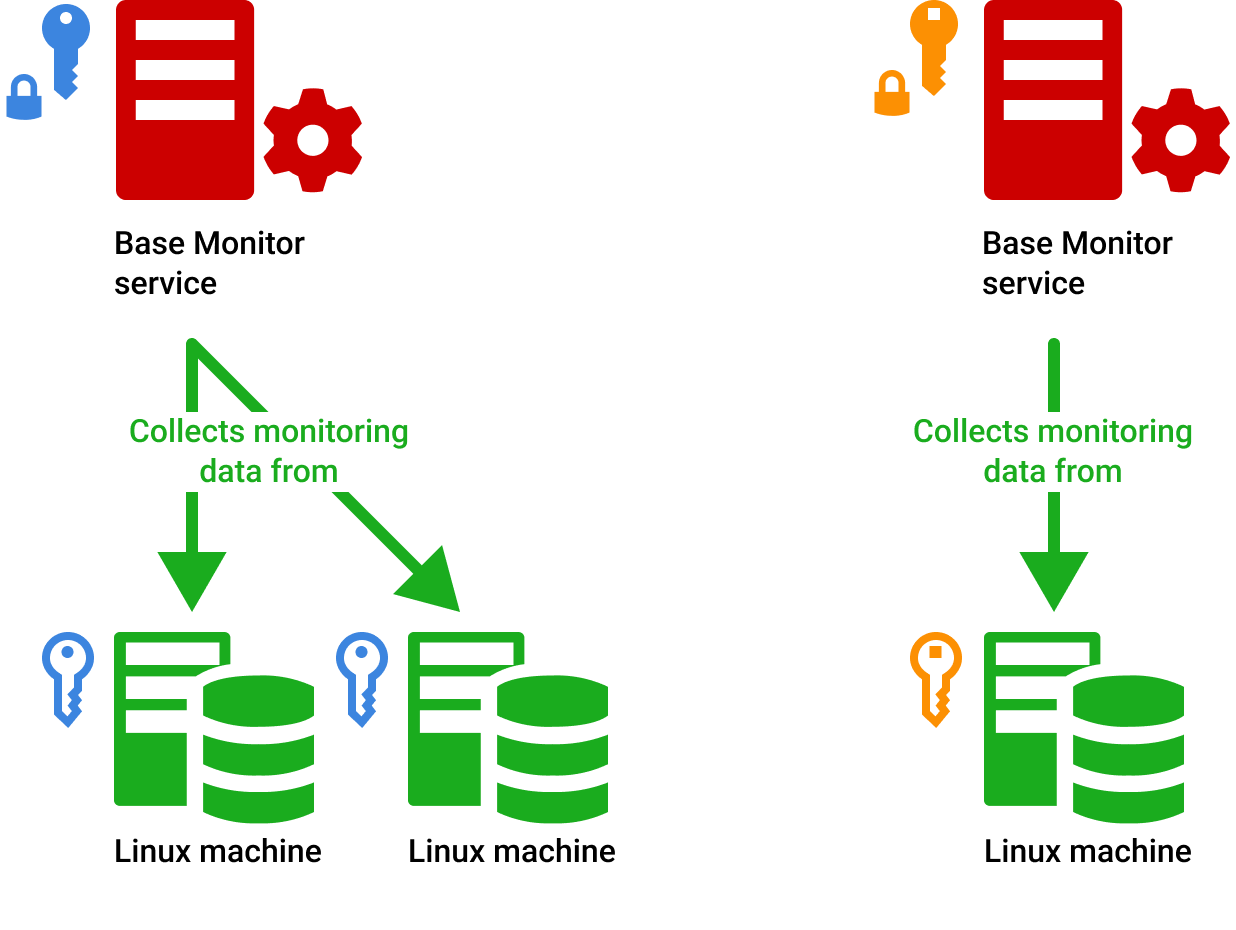In today's interconnected world, securing remote access to IoT devices is more crucial than ever. RemoteIoT platform SSH key plays a pivotal role in ensuring secure communication between devices and networks. By leveraging advanced cryptographic techniques, SSH keys provide an unparalleled level of security for remote IoT deployments. In this comprehensive guide, we will explore everything you need to know about RemoteIoT platform SSH keys and how they enhance the security of your IoT infrastructure.
The Internet of Things (IoT) has revolutionized the way we interact with technology. From smart homes to industrial automation, IoT devices are transforming industries across the globe. However, as the number of connected devices grows, so does the risk of cyber threats. This is where RemoteIoT platform SSH key becomes indispensable. By implementing SSH keys, organizations can establish secure and encrypted connections, safeguarding sensitive data and operations.
This article delves deep into the concept of RemoteIoT platform SSH keys, their importance, implementation, and best practices. Whether you're a beginner or an experienced IT professional, this guide will provide valuable insights to help you secure your IoT ecosystem effectively. Let's get started!
Read also:Jennifer Montana Rising Star In The Entertainment World
Table of Contents
- Introduction to RemoteIoT Platform
- What is an SSH Key?
- Why Use RemoteIoT Platform SSH Key?
- How to Generate SSH Keys
- Implementing SSH Keys in RemoteIoT Platform
- Best Practices for SSH Key Management
- Security Considerations
- Common Issues and Troubleshooting
- Case Studies
- Future Trends in RemoteIoT Security
Introduction to RemoteIoT Platform
The RemoteIoT platform is a cutting-edge solution designed to facilitate secure and efficient remote management of IoT devices. This platform enables organizations to monitor, control, and manage their IoT infrastructure from anywhere in the world. By integrating advanced security features, such as SSH key authentication, RemoteIoT ensures that only authorized users can access critical systems and data.
Key Features of RemoteIoT Platform
- Secure device communication using encryption protocols
- Centralized management dashboard for streamlined operations
- Scalable architecture to accommodate growing IoT ecosystems
- Comprehensive reporting and analytics tools
RemoteIoT platform is widely adopted across various industries, including manufacturing, healthcare, and smart cities, due to its robust security framework and ease of use. The integration of SSH keys further enhances its security capabilities, making it an ideal choice for organizations prioritizing data protection.
What is an SSH Key?
An SSH key is a pair of cryptographic keys used for secure communication over an unsecured network. It consists of a private key, which is kept confidential, and a public key, which is shared with the server. When a user attempts to connect to a remote server, the server verifies the authenticity of the private key by comparing it with the stored public key. This process ensures that only authorized users can access the system.
Types of SSH Keys
- RSA (Rivest-Shamir-Adleman): Widely used and considered secure for most applications
- ECDSA (Elliptic Curve Digital Signature Algorithm): Offers better performance with smaller key sizes
- Ed25519: A modern algorithm known for its speed and security
SSH keys provide a more secure alternative to traditional password-based authentication, reducing the risk of brute-force attacks and unauthorized access.
Why Use RemoteIoT Platform SSH Key?
Implementing SSH keys in the RemoteIoT platform offers several advantages, including enhanced security, improved performance, and simplified management. By replacing password-based authentication with SSH keys, organizations can significantly reduce the likelihood of security breaches.
Benefits of Using SSH Keys
- Stronger authentication mechanism compared to passwords
- Protection against man-in-the-middle attacks
- Automation of secure connections for seamless operations
- Centralized key management for easier administration
Furthermore, SSH keys eliminate the need for users to remember complex passwords, enhancing productivity and user experience. This makes them an ideal choice for organizations managing large-scale IoT deployments.
Read also:The Longest Name In The World A Fascinating Journey Through Names And Records
How to Generate SSH Keys
Generating SSH keys is a straightforward process that can be accomplished using various tools, such as OpenSSH or PuTTY. Below are the steps to create SSH keys for use with the RemoteIoT platform:
- Open a terminal or command prompt on your computer
- Type the following command to generate an SSH key pair:
ssh-keygen -t rsa -b 4096 - Follow the prompts to specify a file location and passphrase for added security
- Once the keys are generated, copy the public key to the RemoteIoT platform server
It is essential to store the private key securely and never share it with unauthorized individuals. Additionally, regularly updating and rotating SSH keys ensures long-term security.
Implementing SSH Keys in RemoteIoT Platform
To integrate SSH keys into the RemoteIoT platform, follow these steps:
- Log in to the RemoteIoT platform management console
- Navigate to the security settings section
- Select the option to enable SSH key authentication
- Upload the public SSH key generated earlier
- Test the connection to ensure successful authentication
By following these steps, you can establish secure connections to your IoT devices using SSH keys. This process minimizes the risk of unauthorized access and ensures the integrity of your IoT ecosystem.
Best Practices for SSH Key Management
Effective SSH key management is critical to maintaining the security of your RemoteIoT platform. Below are some best practices to consider:
- Limit the number of SSH keys to reduce potential vulnerabilities
- Regularly audit and revoke unused or compromised keys
- Use strong passphrases for added protection
- Store private keys in a secure location, such as a hardware security module (HSM)
- Implement role-based access control (RBAC) for granular permissions
Adhering to these practices will help you maintain a robust security posture and protect your IoT infrastructure from potential threats.
Security Considerations
While SSH keys provide a high level of security, they are not immune to attacks. It is essential to be aware of potential vulnerabilities and take proactive measures to mitigate them. Below are some security considerations to keep in mind:
- Protect against unauthorized access by enabling two-factor authentication (2FA)
- Regularly update the RemoteIoT platform and associated software to patch known vulnerabilities
- Monitor system logs for suspicious activities and investigate anomalies promptly
- Limit the exposure of public keys by restricting access to trusted networks
By addressing these security considerations, you can further enhance the protection of your IoT devices and data.
Common Issues and Troubleshooting
Despite their reliability, SSH keys can sometimes encounter issues that affect their functionality. Below are some common problems and their solutions:
- Connection Refused: Verify that the SSH service is running on the server and check firewall settings
- Permission Denied: Ensure the correct permissions are set for the SSH key files
- Key Mismatch: Confirm that the public key uploaded to the server matches the private key on the client
- Timeout Errors: Increase the server's timeout settings or optimize network configurations
By troubleshooting these issues systematically, you can resolve connectivity problems and maintain secure access to your IoT devices.
Case Studies
Several organizations have successfully implemented SSH keys in their RemoteIoT platforms, achieving significant improvements in security and operational efficiency. Below are two case studies highlighting these achievements:
Case Study 1: Smart City IoT Deployment
A major metropolitan city deployed the RemoteIoT platform to manage its smart lighting and traffic systems. By integrating SSH keys, the city reduced unauthorized access attempts by 90% and streamlined maintenance operations, resulting in cost savings of over $500,000 annually.
Case Study 2: Industrial Automation
A manufacturing company implemented SSH keys in its RemoteIoT platform to secure communication between its IoT devices and central control systems. This initiative eliminated downtime caused by cyberattacks and improved overall productivity by 25%.
Future Trends in RemoteIoT Security
As technology continues to evolve, so do the methods for securing IoT devices. Below are some emerging trends in RemoteIoT security:
- Quantum-resistant cryptography for future-proof security
- Artificial intelligence-driven threat detection and response
- Zero-trust architecture for enhanced access control
- Blockchain-based solutions for tamper-proof authentication
Staying informed about these trends will enable organizations to adopt innovative security measures and stay ahead of potential threats.
Conclusion
In conclusion, RemoteIoT platform SSH keys are an essential component of securing IoT ecosystems. By providing robust authentication and encryption capabilities, SSH keys help protect sensitive data and operations from cyber threats. This guide has covered the fundamentals of SSH keys, their implementation in the RemoteIoT platform, and best practices for effective management.
We encourage you to take action by implementing SSH keys in your IoT infrastructure and sharing your experiences with the community. For more informative content on IoT security, explore our other articles and resources. Together, let's build a safer and more connected world!


